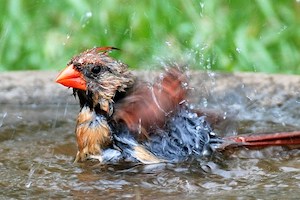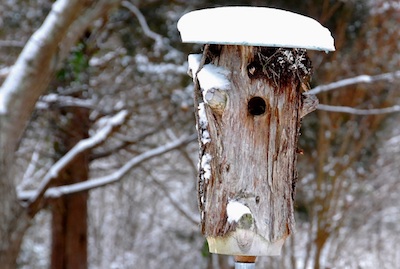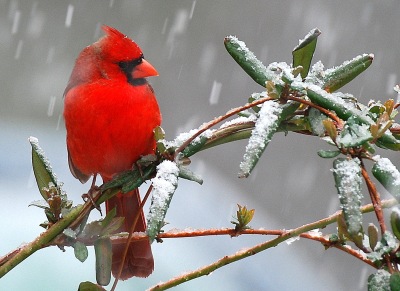Out My Backdoor: Heat Affects Birds, Too

By Terry W. Johnson
An official website of the State of Georgia.

By Terry W. Johnson

By Terry W. Johnson

By Terry W. Johnson
If you are a homeowner, you know there are many tasks you need to complete before winter. These jobs range from raking leaves to splitting and stacking wood, checking the insulation around your doors and windows, planting wildflower seeds, winterizing faucets, and, well, you name it.

By Terry W. Johnson
The tradition of sending Christmas cards is said to have begun in England in 1843. Since Christmas cards began being printed in the United States during the 1870s, cards have been graced with a veritable flock of birds. However, beyond a shadow of a doubt the bird that has graced more Christmas cards than any other is the northern cardinal.
By Terry W. Johnson
Recently, on a cool April morning I stepped out onto my deck and was greeted with a chorus of bird songs. I heard the songs of some of the birds that are familiar year-round residents in my neighborhood –the northern cardinal, Carolina wren, chipping sparrow, northern mockingbird, pine warbler and eastern towhee. Then suddenly I heard a call that I had not heard this year. From the back of my 3-acre lot came a loud wheep. I knew immediately the great crested flycatcher was back.
 The DNR Wildlife Conservation Section is part of a regional project exploring migration routes and habitat use of golden eagles in the eastern U.S.
The DNR Wildlife Conservation Section is part of a regional project exploring migration routes and habitat use of golden eagles in the eastern U.S.
By Terry W. Johnson
While most of us are trying to reduce the amount of fat in our diets, many of our backyard bird neighbors relish bird-feeder offerings laden with animal fats. Birds will eat the fat of cattle, hogs and other animals. However, the fatty food most commonly fed backyard birds is beef fat also known as suet.
By Terry W. Johnson
In recent years, a native shrub named the American beautyberry has been making a transition from Georgia's woodlands to backyards throughout the state. It is remarkable that it has taken Georgians so long to realize that this native shrub is both an attractive addition to our home landscapes and a valuable wildlife food plant.
By Terry W. Johnson
The stress of the long, hot summer is beginning to show on the flowers in my backyard. For weeks, the zinnias, salvias, coneflowers and a host of others along with untold numbers of hummingbirds and butterflies attracted to them have treated my family to a veritable kaleidoscope of color. Knowing that soon the flowers time will be over, I must admit that I am filled with mixed emotions. Hummingbirds are departing in droves. As the flowers continue to wither and die, the butterflies will also disappear.
By Terry W. Johnson
If you are trying to attract birds to your backyard, you undoubtedly already know that one of the easiest ways is with a dependable source of water. Shallow birdbaths are often used for this purpose. They are inexpensive, easy to maintain and birds flock to them.